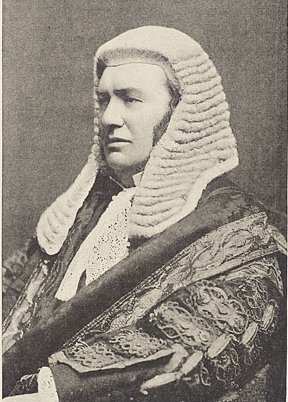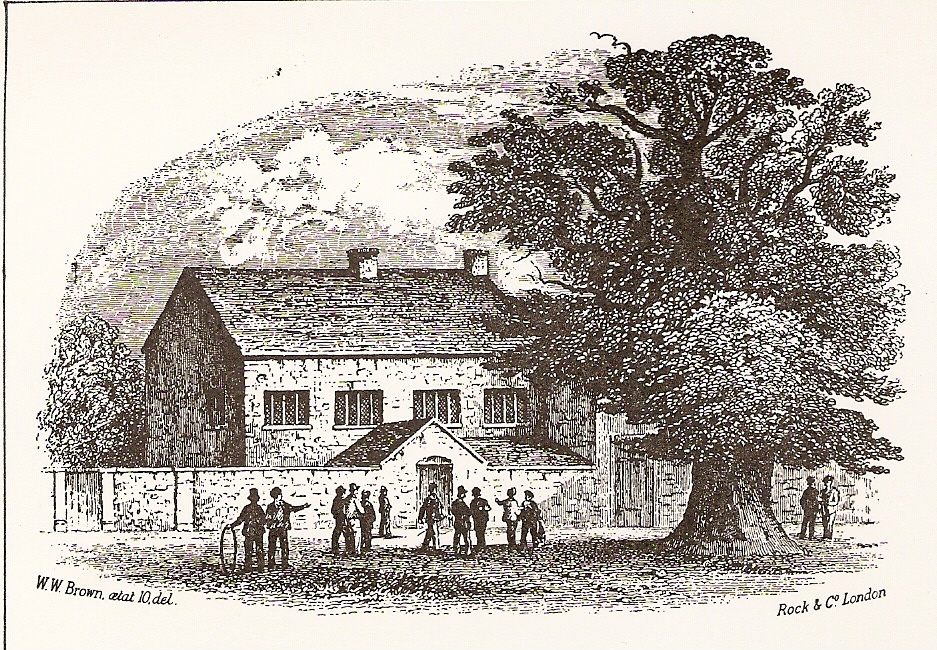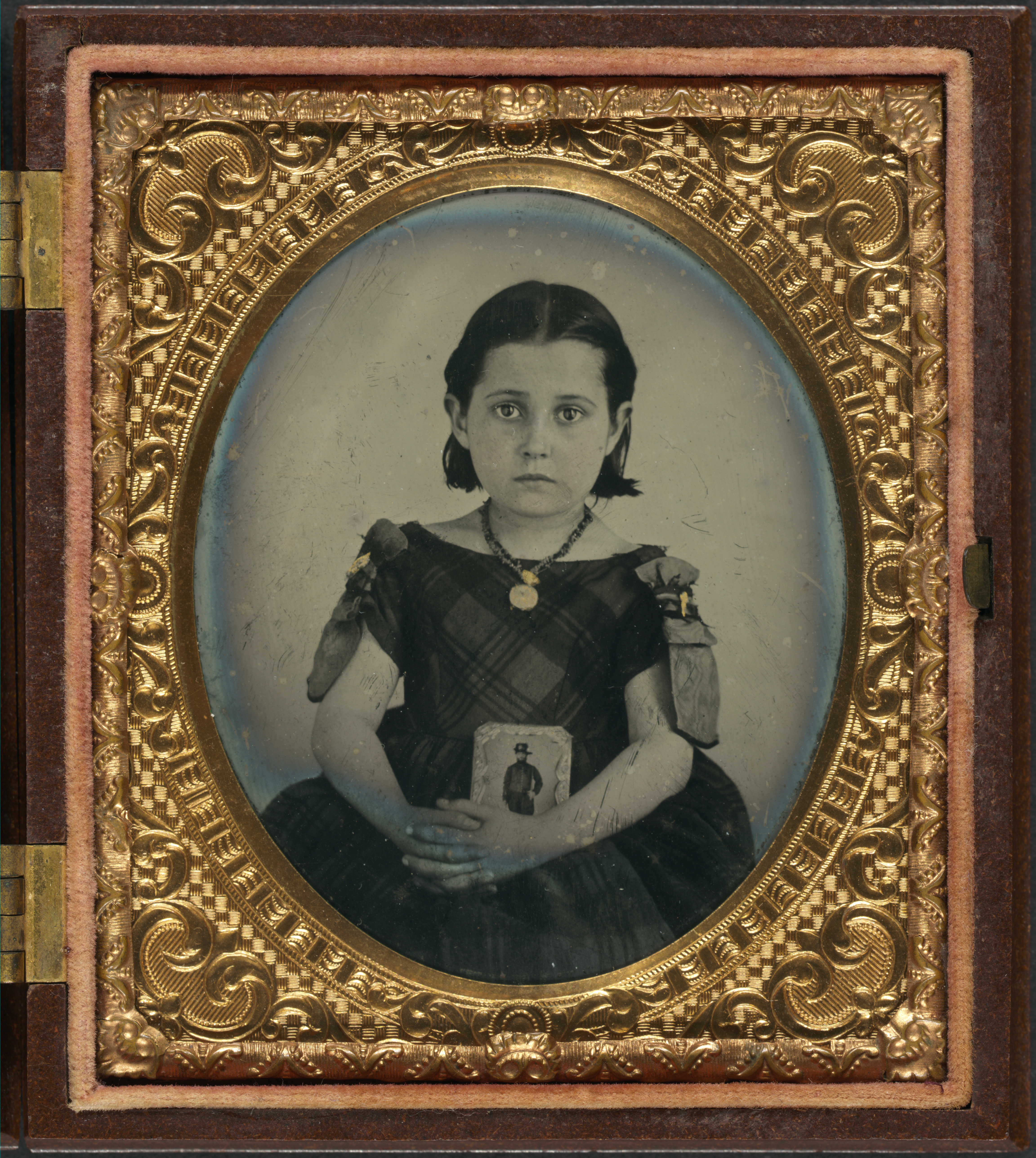|
Anthony Browne (died 1567)
Sir Anthony Browne QS (1509–1567), sometimes referred to as Antony Browne, was a British justice. Life He came from a family of lawyers. His father, Sir Wistan Browne, was a barrister of the Middle Temple, and three of his uncles served as benchers there, one of whom was Sir Humphrey Browne, a justice of the Court of Common Pleas. On his mother, Elizabeth's side were Sir John Mordaunt, chancellor of the Duchy of Cornwall, and William Mordaunt, chief Prothonotary of the Common Pleas. Keeping with family tradition he joined Middle Temple, and became a pupil of John Jenour, at the time the second Prothonotary of the Common Pleas. In 1545, he became a Member of Parliament, and in 1554 a bencher of Middle Temple. He was made a Serjeant-at-law in 1555 under the patronage of the Earl of Oxford, and was then immediately made Queen's Serjeant, obliged as the junior serjeant of his inn to give a reading, which he did on the subject of the Statute of Jeofails. On 5 October 155 ... [...More Info...] [...Related Items...] OR: [Wikipedia] [Google] [Baidu] |
Queen's Serjeant
A Serjeant-at-Law (SL), commonly known simply as a Serjeant, was a member of an order of barristers at the Barristers in England and Wales, English and Irish Bar. The position of Serjeant-at-Law (''servientes ad legem''), or Sergeant-Counter, was centuries old; there are writs dating to 1300 which identify them as descended from figures in France before the Norman Conquest, thus the Serjeants are said to be the oldest formally created order in England. The order rose during the 16th century as a small, elite group of lawyers who took much of the work in the central common law courts. With the creation of Queen's Counsel (or "Queen's Counsel Extraordinary") during the reign of Elizabeth I of England, Elizabeth I, the order gradually began to decline, with each monarch opting to create more King's or Queen's Counsel. The Serjeants' exclusive jurisdictions were ended during the 19th century and, with the Judicature Act 1873 coming into force in 1875, it was felt that there was no ... [...More Info...] [...Related Items...] OR: [Wikipedia] [Google] [Baidu] |
John Lesley
John Lesley (or Leslie) (29 September 1527 – 31 May 1596) was a Scottish Roman Catholic bishop and historian. His father was Gavin Lesley, rector of Kingussie, Badenoch. Early career He was educated at the University of Aberdeen, where he took the degree of M.A. In 1538 he obtained a dispensation permitting him to hold a benefice, notwithstanding his being a natural son, and in June 1546 he was made an acolyte in the cathedral church of Aberdeen, of which he was afterwards appointed a canon and prebendary. He also studied at Poitiers, at Toulouse and at Paris, where he was made doctor of laws in 1553. In 1558 he took orders and was appointed Official of Aberdeen, and inducted into the parsonage and prebend of Oyne. At the Reformation Lesley became a champion of Catholicism. He was present at the disputation held in Edinburgh in 1561, when Knox and Willox were his antagonists. He was one of the commissioners sent the same year to bring over the young Mary, Queen of Scot ... [...More Info...] [...Related Items...] OR: [Wikipedia] [Google] [Baidu] |
Maldon (UK Parliament Constituency)
Maldon is a constituency in Essex represented in the House of Commons of the UK Parliament since 2010 by Sir John Whittingdale, a Conservative. Constituency profile Maldon covers a rural area of Essex including the Dengie Peninsula. The main settlements are Maldon and Burnham-on-Crouch on the coast, and the new town of South Woodham Ferrers. The seat is slightly wealthier than the UK average. History The Parliamentary Borough of Maldon, which included the parish of Heybridge, had sent two members to Parliament since 1332 (36 years after the Model Parliament). Under the Reform Act of 1867, its representation was reduced to one and in 1885 the Parliamentary Borough was abolished and replaced with a Division of the County of Essex (later a County Constituency) under the Redistribution of Seats Act 1885. The constituency was abolished for the 1983 general election following the Third Periodic Review of Westminster Constituencies, but re-established for the 2010 general electi ... [...More Info...] [...Related Items...] OR: [Wikipedia] [Google] [Baidu] |
Scarborough (UK Parliament Constituency)
Scarborough was the name of a constituency in Yorkshire, electing Members of Parliament to the House of Commons, at two periods. From 1295 until 1918 it was a parliamentary borough consisting only of the town of Scarborough, electing two MPs until 1885 and one from 1885 until 1918. In 1974 the name was revived for a county constituency, covering a much wider area; this constituency was abolished in 1997. Boundaries 1974–1983: The Borough of Scarborough, the Urban Districts of Pickering and Scalby, and the Rural Districts of Pickering and Scarborough. 1983–1997: The Borough of Scarborough wards of Ayton, Castle, Cayton, Central, Danby, Derwent, Eastfield, Eskdaleside, Falsgrave, Fylingdales, Lindhead, Mayfield, Mulgrave, Newby, Northstead, Scalby, Seamer, Streonshalh, Weaponness, and Woodlands. History Scarborough was first represented in a Parliament held at Shrewsbury in 1282, and was one of the boroughs sending 2 MPs to the Model Parliament of 1295 which is now gener ... [...More Info...] [...Related Items...] OR: [Wikipedia] [Google] [Baidu] |
Preston (UK Parliament Constituency)
Preston is a List of United Kingdom Parliament constituencies, constituency represented in the House of Commons of the United Kingdom, House of Commons of the Parliament of the United Kingdom, UK Parliament since 2000 by Mark Hendrick, Sir Mark Hendrick, a member of the Labour Party (UK), Labour Party and Co-operative Party. History ;1295–1950 The seat was created for the Model Parliament and sent members until at least 1331 until a new (possibly confirmatory) grant of two members to Westminster followed. From 1529 extending unusually beyond the 19th century until the 1950 general election the seat had two-member representation. Political party, Party divisions tended to run stronger after 1931 before which two different parties' candidates frequently came first and second at elections under the Plurality-at-large voting, bloc vote system. In 1929, a recently elected Liberal Party (UK), Liberal, William Jowitt, 1st Earl Jowitt, Sir William Jowitt decided to join the Labour P ... [...More Info...] [...Related Items...] OR: [Wikipedia] [Google] [Baidu] |
Great Bedwyn (UK Parliament Constituency)
Great Bedwyn was a parliamentary borough in Wiltshire, centred on Great Bedwyn, which elected two Members of Parliament (MPs) to the House of Commons from 1295 until 1832, when the borough was abolished by the Great Reform Act. Members of Parliament 1295–1640 1640–1832 Notes References *Robert Beatson''A Chronological Register of Both Houses of Parliament''(London: Longman, Hurst, Res & Orme, 1807) *D Brunton & D H Pennington, ''Members of the Long Parliament'' (London: George Allen & Unwin, 1954) *''Cobbett's Parliamentary history of England, from the Norman Conquest in 1066 to the year 1803'' (London: Thomas Hansard, 1808) viInternet Archive* J Holladay Philbin, ''Parliamentary Representation 1832 – England and Wales'' (New Haven: Yale University Press, 1965) *Henry Stooks Smith, ''The Parliaments of England from 1715 to 1847'' (2nd edition, edited by FWS Craig – Chichester: Parliamentary Reference Publications, 1973) * * {{Cite journal , last=Ward , first=J ... [...More Info...] [...Related Items...] OR: [Wikipedia] [Google] [Baidu] |
Lostwithiel (UK Parliament Constituency)
Lostwithiel was a rotten borough in Cornwall which returned two Members of Parliament to the House of Commons in the English and later British Parliament from 1304 to 1832, when it was abolished by the Great Reform Act. History The borough consisted of the town of Lostwithiel and part of the neighbouring Lanlivery parish; it was a market town whose trade was mainly dependent on the copper mined nearby. Unlike many of the most notorious Cornish rotten boroughs, Lostwithiel had been continuously represented since the Middle Ages and was originally of sufficient size to justify its status. However, by the time of the Great Reform Act it had long been a pocket borough, under the complete control of the Earls of Mount EdgcumbePage 144, Lewis Namier, ''The Structure of Politics at the Accession of George III ''The Structure of Politics at the Accession of George III'' was a book written by Lewis Namier. At the time of its first publication in 1929 it caused a historiographical revo ... [...More Info...] [...Related Items...] OR: [Wikipedia] [Google] [Baidu] |
Parliament Of England
The Parliament of England was the legislature of the Kingdom of England from the 13th century until 1707 when it was replaced by the Parliament of Great Britain. Parliament evolved from the great council of bishops and peers that advised the English monarch. Great councils were first called Parliaments during the reign of Henry III (). By this time, the king required Parliament's consent to levy taxation. Originally a unicameral body, a bicameral Parliament emerged when its membership was divided into the House of Lords and House of Commons, which included knights of the shire and burgesses. During Henry IV's time on the throne, the role of Parliament expanded beyond the determination of taxation policy to include the "redress of grievances," which essentially enabled English citizens to petition the body to address complaints in their local towns and counties. By this time, citizens were given the power to vote to elect their representatives—the burgesses—to the H ... [...More Info...] [...Related Items...] OR: [Wikipedia] [Google] [Baidu] |
Brentwood School (England)
, established = , type = Public SchoolIndependent day and boarding , religion = Church of England , head_label = Headmaster , head = M Bond , chair_label = Chairman of Governors , chair = Sir Michael Snyder , founder = Sir Antony Browne , address = Middleton Hall Lane , city = Brentwood , county = Essex , country = England , postcode = CM15 8EE , dfeno = 881/6035 , urn = 115429 , staff = 137 , enrolment = 1,531 , capacity = 1570 , gender = Coeducational (Diamond Model) , lower_age = 3 , upper_age = 19 , houses = North South East West Weald Mill Hill (female boarders) Hough (male board ... [...More Info...] [...Related Items...] OR: [Wikipedia] [Google] [Baidu] |
South Weald
South Weald is a mainly farmland and park settlement in the Borough of Brentwood in Essex, England. The civil parish of South Weald was absorbed by Brentwood Urban District in 1934. In 1931 the civil parish had a population of 6370. South Weald contains Weald Country Park, among its former mansion's residents was Octavius Coope brewer founding Ind Coope and who was for three different seats a national-level politician (MP) for one year each seat. North Weald is centred northwest. Origin of South Weald Though only 18 miles from London, the large parish of South Weald even today retains a strongly rural character. The name ‘Weald’ means forest, and in early times the parish lay in one of the most wooded parts of Essex. Today, perhaps South Weald is most known to locals due to the Weald Country Parks. With South Weald being such a large parish (over 5,000 acres) it was inevitable that small hamlets should grow up in addition to the village clustered south of the parish church. ... [...More Info...] [...Related Items...] OR: [Wikipedia] [Google] [Baidu] |
Mourning Ring
Mourning is the expression of an experience that is the consequence of an event in life involving loss, causing grief, occurring as a result of someone's death, specifically someone who was loved although loss from death is not exclusively the cause of all experience of grief. The word is used to describe a complex of behaviours in which the bereaved participate or are expected to participate, the expression of which varies by culture. Wearing black clothes is one practice followed in many countries, though other forms of dress are seen. Those most affected by the loss of a loved one often observe a period of mourning, marked by withdrawal from social events and quiet, respectful behavior. People may follow religious traditions for such occasions. Mourning may apply to the death of, or anniversary of the death of, an important individual such as a local leader, monarch, religious figure, or member of family. State mourning may occur on such an occasion. In recent years, so ... [...More Info...] [...Related Items...] OR: [Wikipedia] [Google] [Baidu] |
Catholic
The Catholic Church, also known as the Roman Catholic Church, is the largest Christian church, with 1.3 billion baptized Catholics worldwide . It is among the world's oldest and largest international institutions, and has played a prominent role in the history and development of Western civilization.O'Collins, p. v (preface). The church consists of 24 ''sui iuris'' churches, including the Latin Church and 23 Eastern Catholic Churches, which comprise almost 3,500 dioceses and eparchies located around the world. The pope, who is the bishop of Rome, is the chief pastor of the church. The bishopric of Rome, known as the Holy See, is the central governing authority of the church. The administrative body of the Holy See, the Roman Curia, has its principal offices in Vatican City, a small enclave of the Italian city of Rome, of which the pope is head of state. The core beliefs of Catholicism are found in the Nicene Creed. The Catholic Church teaches that it is th ... [...More Info...] [...Related Items...] OR: [Wikipedia] [Google] [Baidu] |




.jpg)